Curbside Management
With increasing concern for balancing needs for all roadway users, and the growth of transportation network companies (TNCs) like Uber and Lyft, as well as online shopping and associated deliveries, demand for curbside pickups, drop-offs and dwell times, is growing dramatically. Potential users of the curbside include:
Drivers, both TNC and non-TNC
Parked vehicles and electric vehicle (EV) charging
Bicycles and bicycle infrastructure
Pedestrians and crossing infrastructure
Couriers and delivery vehicles
Local businesses
Mobile vendors
Transit and transit infrastructure
ADA access
Emergency services
Taxis, transportation network companies (TNCs), and shuttles
Parklets and streetscape
Sharing Our Knowledge

ITE Curbside Management Practitioner's Guide
Project Manager
Fehr & Peers staff served as the project manager and co-authors of the ITE Complete Streets Council effort to develop a handbook for local jurisdictions on how to inventory, assess, enhance, and prioritize curb spaces to meet the multi-modal demands at the curb in a safe and efficient way. The practitioner’s guide was envisioned to address key gaps in existing curbside guidance.
- How to measure curbside performance
- How to identify and resolve trade-off considerations
- How to explain the value of curb uses to stakeholders
The guide considers regulatory, operations, and technology strategies to optimize curb access and usage, and feature case studies and reference material for quick reference by ITE members.
The guide is being assembled based on an initial white paper by NACTO, case study surveys of NACTO and ITE members (survey out now to request these), as well as presentations and workshops at key conferences in 2017/2018.
Click here to view the Guide.
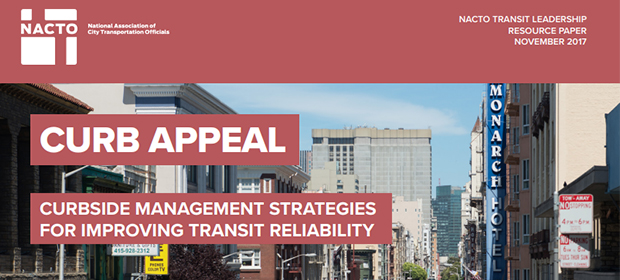
NACTO Initial Transit-Focused White Paper
Peer Reviewer
In May 2017, NACTO released a draft white paper, Curb Appeal: Curbside Management Strategies for Improving Transit Reliability. Revised in August 2017 after a peer review process (which included Fehr & Peers staff), the white paper profiles cities across the US that are managing curbspace to prioritize high capacity on street modes. The cities are using five broad approaches:
- Strategically using curbside space to prioritize transit movement (featuring Seattle’s right-of-way policy)
- Managing other curbside users to clear the way for transit (featuring Brooklyn’s commercial loading and delivery zones)
- Measuring how a street works to most effectively manage it (featuring San Francisco’s SFpark dynamic parking pilot)
- Using curbsides to prioritize transit movement (featuring red bus lanes in Chicago and San Francisco and peak hour transit lanes in Brooklyn), and
- Looking beyond the corridor and beyond the curb at larger city-wide strategies (featuring parking strategies in Austin and Portland)
The paper set the stage for the conference discussions that followed, providing presentation material and a framework for gap identification, strategy selection, and prioritization. Final document release expected: Fall 2017.
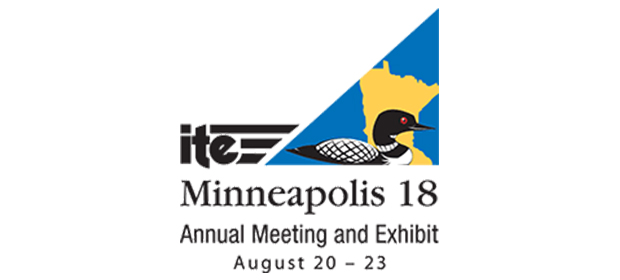
ITE Annual Meeting 2018
The 2018 ITE conference will bring together traditional thought with current perspectives, future forecasts, and upcoming trends facing transportation professionals today.
Fehr & Peers staff will participate in a session with NACTO and the ITE Complete Streets Council to present the new ITE-NACTO curb space management practitioner’s guide. This web resource was envisioned to help local jurisdictions strategically inventory, assess, enhance, and prioritize curb spaces and meet multimodal demands in a safe and efficient way. Participants will learn to:
- Describe the basic elements associated with a comprehensive curbside management process
- Identify current practitioner resources and learning materials to facilitate improved curbside management
- Compare curbside challenges faced by other cities and public agencies with their own jurisdiction.
For more details about the presentation on Tuesday, August 21, click here.

Cincinnati Mobility Summit 2018
As part of a new partnership between Uber and the City of Cincinnati, Uber and the Harvard Kennedy School of Government are organizing the Cincinnati Mobility Summit, a forum on how cities can manage transportation mobility in a way that overcomes the traditional boundaries between transport modes.
The summit will bring together regional leaders and global experts on these topics, and highlight some of the cutting edge work happening in Cincinnati.
Fehr & Peers was there to discuss our work with Uber and the City of Cincinnati on the Curb of the Future and the first of its kind Uber and transit agency cooperative strategic study. The goal of the Curb of the Future work is to balance the needs and safety of all users, prioritizing mobility of public transportation service while addressing the growing demand for curb space at key sites along downtown corridors. The goal of the transit study is to better understand the users of and interplay between Uber and transit as well as determine possibilities for integration.
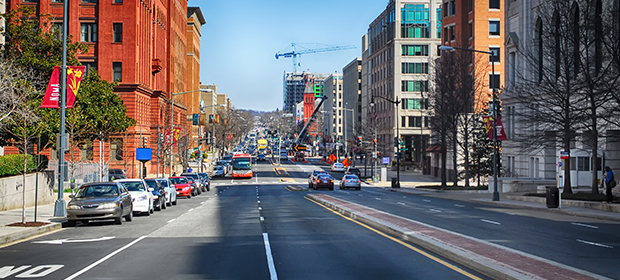
TRB Annual Meeting, Washington 2018
Workshop Lead
With the increasing demand for curb space in urban areas and suburban centers, transportation professionals face challenges providing a safe, efficient, and effective system that moves freight and passengers and accommodates transit, transportation network companies, deliveries, parking, pedestrians, and bicyclists. What happens at the curb is important to the planning, funding, design, operations, and maintenance of a safe and efficient transportation system. This workshop is co-sponsored by the Institute of Transportation Engineers and the National Association of City Transportation Officials.
View more details in the flyer here.
Putting Our Expertise into Practice

Future of the Curb in Cincinnati
Cincinnati, OH
Fehr & Peers is working with Uber and the City of Cincinnati to help balance the needs and safety of all users, prioritizing mobility of public transportation service while addressing the growing demand for curb space at key sites along downtown corridors. Our approach for this project will include reviewing several City streets to evaluate the interactions between transit vehicles and passenger loading activities. We will be collecting data related to transit activity, traffic volumes, and passenger loading activity, while also providing agency stakeholders with potential treatments, technologies, and innovative ideas to design the future of curb space to optimize the curb. Leveraging ITE and NACTO research and strategies, our plan is to make the most out of curb space as shared mobility grows as a hot topic across the globe. Click here to view the full study.
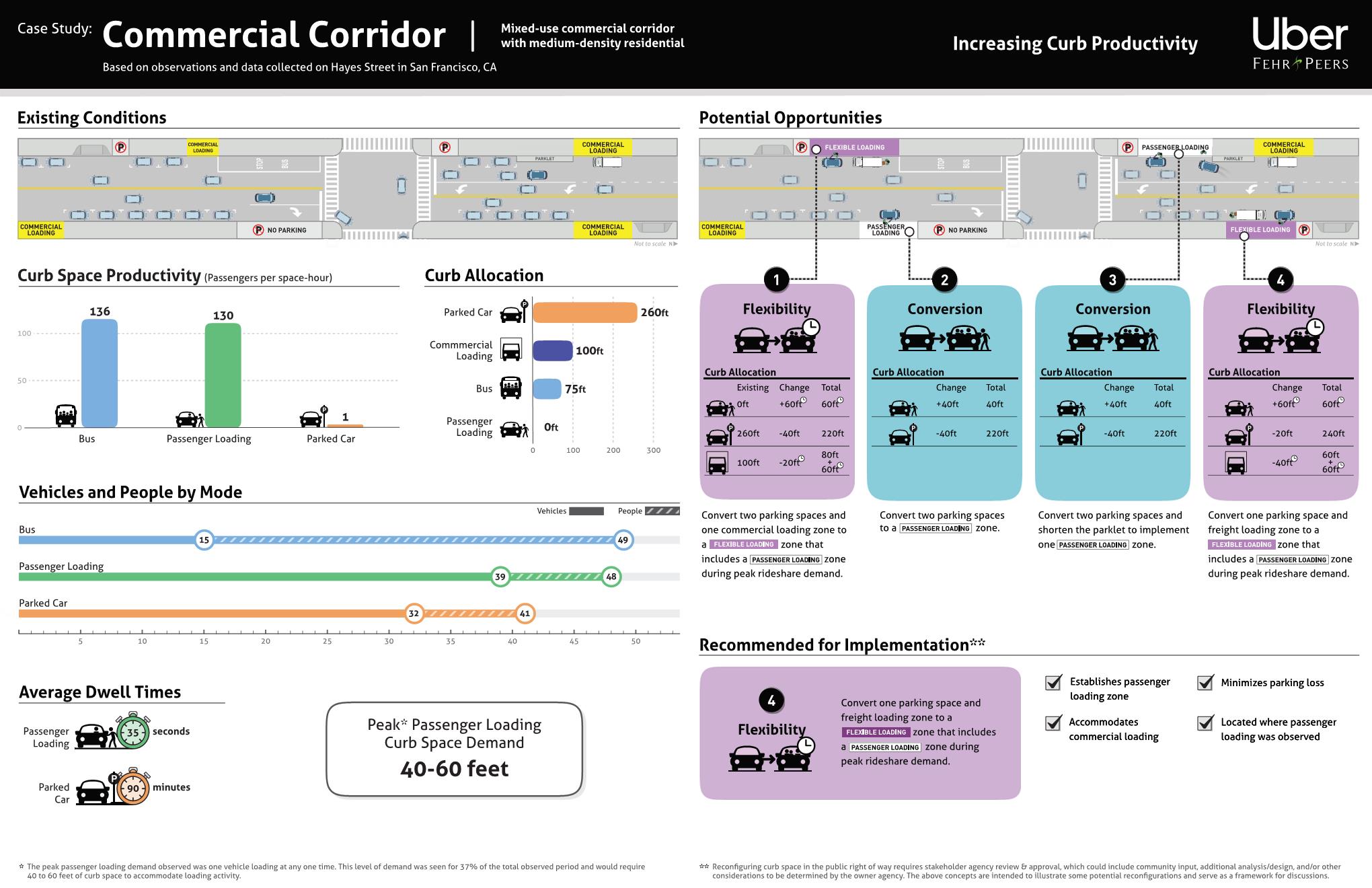
San Francisco Curb Study
San Francisco, CA
Fehr & Peers has been working with Uber to create safer, more efficient and productive curbs and streets in San Francisco. As part of this study, Fehr & Peers selected five different blocks in San Francisco (the “case study locations”) representing a range of different neighborhood characteristics and street typologies. All five locations experience high levels of rideshare passenger loading activity and are broadly comparable to other similar urban environments across the country. For each location, we collected, observed, and analyzed traffic count data, photography, and Uber activity data to quantify passenger loading demand, evaluate interactions between roadway users, and understand other behaviors and trends at the curb. Our team explored and defined concepts and metrics that allowed us to quantify curb activity and develop data-supported findings and recommendations about curb space allocation. Click here to view the full study.
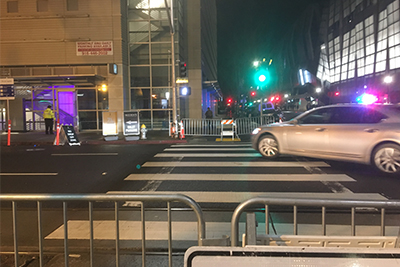
TNCs and Street Safety White Paper
San Francisco, CA
Fehr & Peers is collaborating with the SFMTA and SFCTA to develop a white paper to document street safety issues and opportunities associated with app-based mobility providers (transportation network companies, such as Lyft and Uber) in San Francisco. With no data source available to begin the research, Fehr & Peers is overseeing a comprehensive data collection and analysis project with UC Berkeley, and also conducting interviews with internal stakeholders and cities across the US. The first-of-its-kind project will propose a series of policy, programmatic, and infrastructure steps the city can take to enhance safety in collaboration with TNC companies, drivers, and passengers.
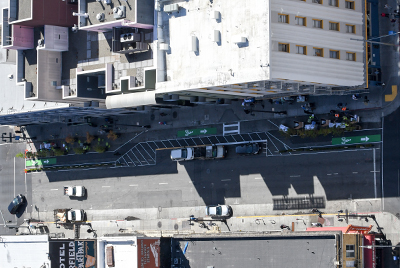
Safer Taylor Street
San Francisco, CA
Partnering with SFMTA from the citywide scale of WalkFirst to the corridor scale of Safer Taylor Street, Fehr & Peers has worked with SFMTA to zoom in on corridor-specific safety issues, which may be slightly different than the citywide issues and priorities. Fehr & Peers put on a temporary complete streets installation on Taylor Street to demonstrate the potential improvements to the community in full-scale. One of the components of this installation included commercial and passenger loading spaces. By testing parking-separated bikeways with active passenger and commercial loading zones, we were able to take feedback from residents on a potential curbside management scheme for the corridor.
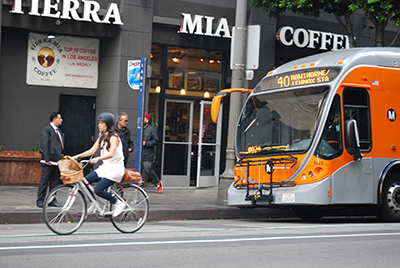
Bike Bus Interface Study
Los Angeles, CA
Fehr & Peers is evaluating bus/bike interactions in a variety of settings across Los Angeles County. Recent policy shifts in Los Angeles County have yielded tremendous expansion in bike and transit infrastructure, increasing the frequency of interactions between bus drivers and bicyclists. With this study, Fehr & Peers is developing guidance to help Metro design future facilities to best accommodate these two modes. A key part of the study is a literature review of regional, national, and international best practices for multi-modal street designs. In addition to drawing on existing research, Fehr & Peers is analyzing 15 corridors in the county that contain varying design solutions to accommodate buses alongside bicycles.
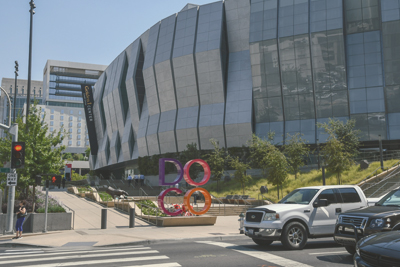
Golden 1 Center
Sacramento, CA
As part of the Golden 1 Center Transportation Management Plan, Fehr & Peers staff observed TNC drop-off activity prior to events and Sacramento Kings games. Staff were situated at several of the primary drop-off locations to measure the number of drop-offs. According to a survey of Kings game attendees, nine percent of attendees used a TNC to arrive to Golden 1 Center, and an average of 2.4 persons per vehicle were dropped off by each TNC. This suggests about 650 individual TNC drop-offs for a sold-out 17,500 person game. The most common reasons cited for using a TNC were their convenience and low cost. In an ongoing effort to manage traffic at games, traffic management personnel deploy signs to restrict drop-offs in certain critical areas. Initial monitoring of the event center revealed continuous and substantial improvements in how all modes of travel, including trips by TNCs, are managed in the vicinity of the Golden 1 Center during events.
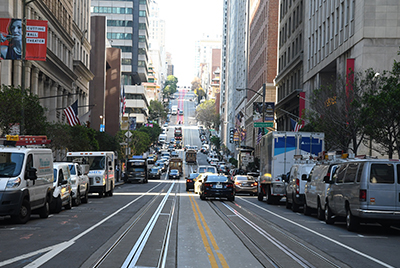
SF Travel and Loading Demand Update
San Francisco, CA
Fehr & Peers and the City of San Francisco are conducting the first citywide, data-driven study of how land use development interacts with curbside loading, and developing a framework to estimate future curb demand in San Francisco. 24-hour observations of loading zones, as well as travel surveys, have captured new data on loading activity on streets across San Francisco. This loading activity includes passengers in TNCs and private vehicles, traditional deliveries, and deliveries from new app-based on-demand services. This data provides a new foundation for how new development can plan for and accommodate changing loading demand for a variety of contexts.
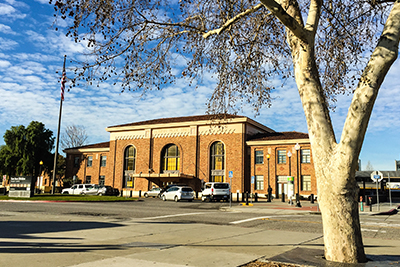
San Jose Diridon Station Curb Space Evaluation
San Jose, CA
As part of the San Jose Diridon Station Master Plan, Fehr & Peers evaluated the existing and provided guidance on the future drop-off and taxi areas at the station. Diridon Station is expected to transform significantly over the next 15 – 20 years with the introduction of California High Speed Rail (CAHSR), the extension of Bay Area Rapid Transit (BART) to Santa Clara, a potential Airport Connecting Service (ACS) from Norman Y. Mineta San José International Airport, and the expansion of existing bus and rail services. No changes to existing drop-off and taxi areas have been identified as part of previous station planning efforts, though the demand for these trips will increase significantly in the future. In particular, CAHSR service is expected to contribute to a large increase in the demand for pick-up and drop-off trips, both from private automobiles and Transportation Network Companies (TNCs), like Uber and Lyft. By 2040, Fehr & Peers estimated there will be about 4,600 daily passenger pick-ups at the station, and a similar number of drop-offs. In addition, there will be about 4,200 daily taxi and TNC pick-ups and a similar number of drop-offs. Addressing the need for adequate curb space for passenger pick-up and drop-off activities is a key element in the evaluation of curb space alternatives in the future.
How could your community benefit from curbside management?
Quick Links
© 2017 – 2024 Fehr & Peers. All rights reserved.

